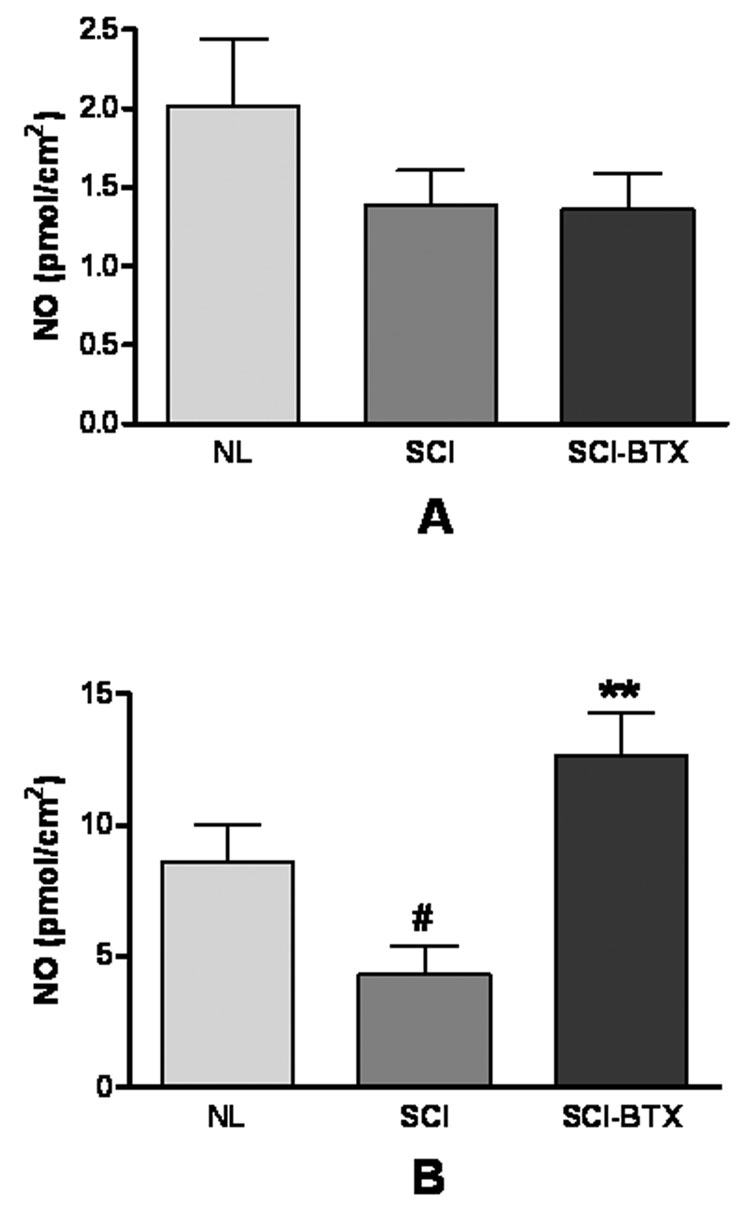Figure 3.
The figure displays urothelial nitric oxide release in normal and spinal cord injured bladders treated with bovine serum albumin [NL (n=7), and SCI (n=5), respectively], and in spinal cord injured bladders treated with BoNT-A (SCI-BTX, n=5) under basal (i.e. figure 3A) and hypoosmotic (i.e. figure 2B) conditions. There was no significant change in basal nitric oxide release following spinal cord injury (i.e. figure 3A). In contrast, hypoosmotic evoked nitric oxide release decreased following spinal cord injury (i.e. figure 3B). In addition, while BoNT-A had no effect on basal nitric oxide release, it significantly enhanced hypoosmotic nitric oxide release in spinal cord injured bladders (figure 3B). #denotes p<0.05 between NL and SCI groups while **denotes p<0.01 between SCI and SCI-BTX groups using the one way analysis of variance test with Newman-Keuls multiple comparison test.

